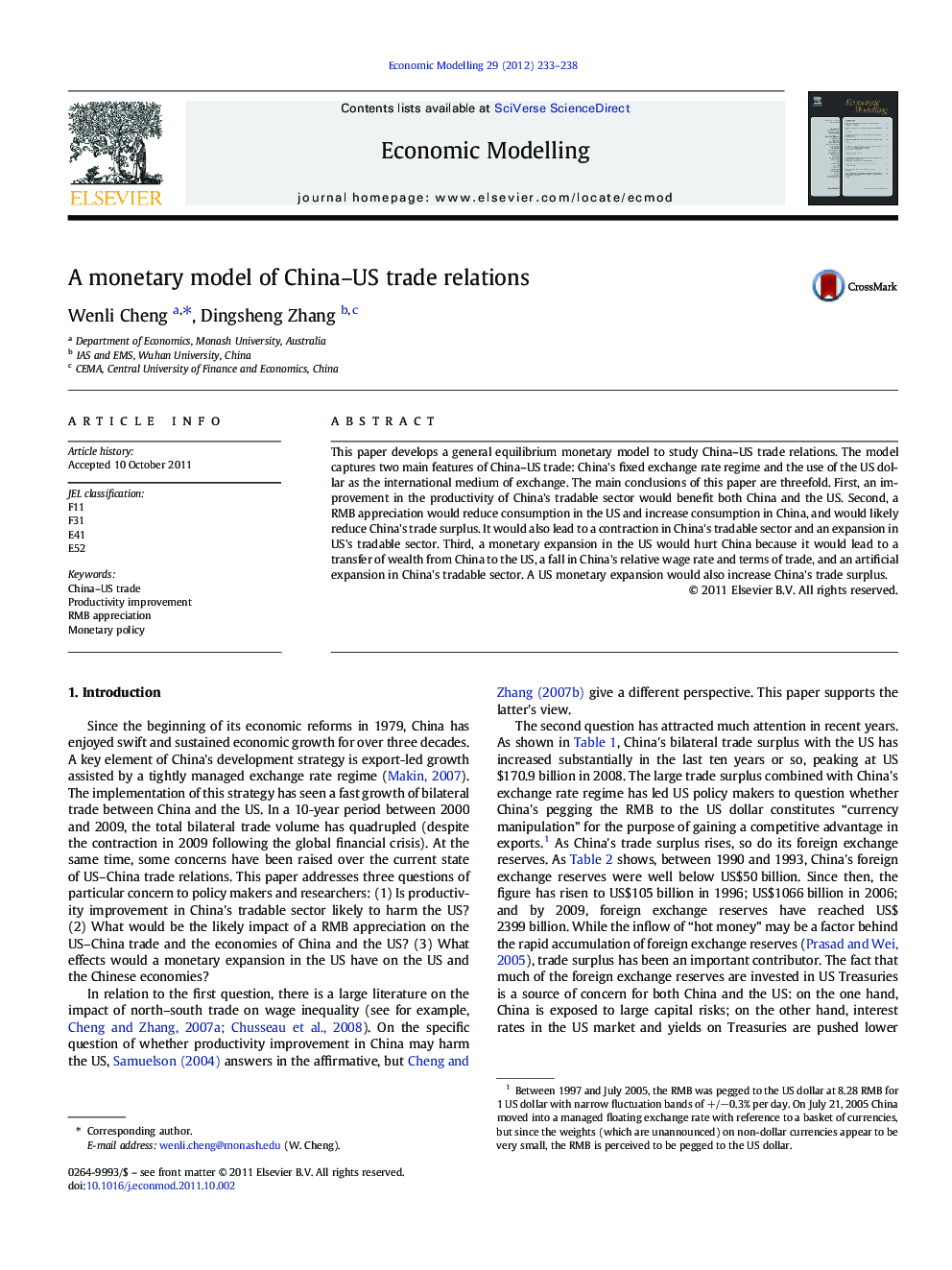| Article ID | Journal | Published Year | Pages | File Type |
|---|---|---|---|---|
| 5055504 | Economic Modelling | 2012 | 6 Pages |
This paper develops a general equilibrium monetary model to study China-US trade relations. The model captures two main features of China-US trade: China's fixed exchange rate regime and the use of the US dollar as the international medium of exchange. The main conclusions of this paper are threefold. First, an improvement in the productivity of China's tradable sector would benefit both China and the US. Second, a RMB appreciation would reduce consumption in the US and increase consumption in China, and would likely reduce China's trade surplus. It would also lead to a contraction in China's tradable sector and an expansion in US's tradable sector. Third, a monetary expansion in the US would hurt China because it would lead to a transfer of wealth from China to the US, a fall in China's relative wage rate and terms of trade, and an artificial expansion in China's tradable sector. A US monetary expansion would also increase China's trade surplus.
